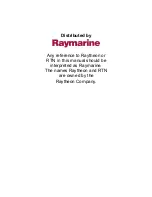
NOTE:
Aeration is required whenever the agitation setpoint is greater than
750
rpm. NBS suggests a minimum airflow rate of 0.25 vvm when running
at speeds of 750 rpm or more.
*NOTE:
Always connect the water out line first.
3.10 D.O. ACTIVE SYSTEM
The system is designed to control D.O. within a range of 5-95%. D.O. regulation is
accomplished by PID control of agitation speed between 50 and 1000 rpm. When the
D.O. actual value is above the D.O. set point, the agitation rpm will decrease until the
D.O. set point is reached.
As the D.O. level drops below the set point value, agitation will continue to increase
until the D.O. set point is reached. Any further increases in agitation, if needed, must
be introduced manually.
To set up and use D.O. Mode proceed as follows:
1.
Set selector to Agitation.
2.
Set mode to set point.
3.
Adjust rpm with Inc/Dec to the minimum rpm value you wish for D.O. control.
4.
Press D.O. control active and observe LED is now on for both D.O. control
active and D.O. control max rpm.
5.
Adjust rpm with Inc/Dec to maximum value you wish for D.O. control.
6.
Set mode switch to control.
7.
D.O. mode is now controlled by regulation of the Agitation (rpm) between the
limits that have been set (minimum/maximum set points).
3.11 SAMPLING PROCEDURE (Fig. 2)
To sample the culture, proceed as follows:
1.
Check that the value on the sampler is closed.
2.
Loosen the sample bottle so that it is not sealed against the sampler gasket.
3.
Squeeze the rubber bulb and then tighten the bottle to seal against the sampler
port.
4.
Open sampler value and slowly release the bulb.
5.
When desired volume of sample is obtained, close the valve.
M1226-0050 15
Summary of Contents for BIOFLO III
Page 2: ......
Page 7: ......
Page 9: ...M1226 0050 2...
Page 37: ...M1226 0050 30...
Page 40: ...M1226 0050 33...
Page 48: ...FIGURE 1 VESSEL SCHEMATIC M1226 0050 41...
Page 49: ...FIGURE 2 SAMPLING SYSTEM M1226 0050 42...
Page 50: ...FIGURE 3 FLOWMETER CONVERSION M1226 0050 43...
Page 51: ...FIGURE 4 FRONT PANEL M1226 0050 44...
Page 52: ...FIGURE 5 REAR OF CABINET M1226 0050 45...
Page 53: ...FIGURE 6 SWITCH PANEL M1226 0050 46...
Page 54: ...FIGURE 7 EXTERNAL NUTRIENT PUMP TERMINAL M1226 0050 47...
Page 55: ...FIGURE 8 SUGGESTED IMPELLER LOCATION M1226 0050 48...
Page 56: ...FIGURE 9 HEADPLATE M1226 0050 49...
Page 57: ...FIGURE 10 SPARGER TUBE M1226 0050 50...
Page 58: ...FIGURE 11 HARVEST TUBE M1226 0050 51...
Page 59: ...FIGURE 12 THERMOWELL M1226 0050 52...
Page 60: ...FIGURE 13 FOAM PROBE M1226 0050 53...
Page 61: ...FIGURE 14 BAFFLE INSTALLATION M1226 0050 54...
Page 62: ...FIGURE 15 SIDE PORTS M1226 0050 55...
Page 63: ...FIGURE 16 pH PROBE INSTALLATION M1226 0050 56...
Page 64: ...FIGURE 17 D O PROBE PHOENIX INSTALLATION M1226 0050 57...
Page 65: ...FIGURE 18 D O PROBE INGOLD INSTALLATION M1226 0050 58...
Page 66: ...FIGURE 19 CONVERSION OF D O PORT TO INOCULATION PORT M1226 0050 59...
Page 67: ...FIGURE 20 EXHAUST CONDENSER INSTALLATION M1226 0050 60...
Page 68: ...FIGURE 21 RESTRICTOR IN CONDENSER WATER IN LINE M1226 0050 61...
Page 69: ...FIGURE 22 DISASSEMBLY OF CONDENSER M1226 0050 62...
Page 70: ...FIGURE 23 FACTOR AFFECTING pH CONTROL M1226 0050 63...
Page 86: ...M1226 0050 79...
Page 87: ...FIGURE 25 BEARING HOUSING ASSEMBLY M1226 0050 80...
Page 88: ...FIGURE 26 BEARING HOUSING IN STERILIZATION M1226 0050 81...
Page 89: ...M1226 0050 82...
Page 90: ...M1226 0050 83...
Page 91: ...M1226 0050 84...
Page 92: ...M1226 0050 85...
















































